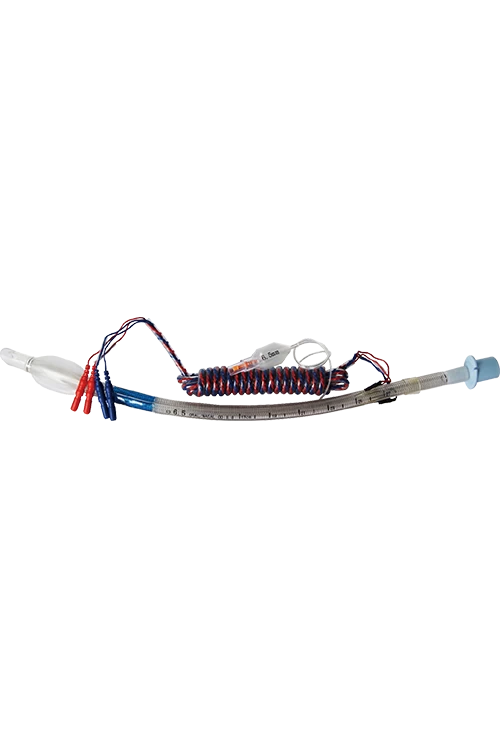Tracheal tube insertion is a critical procedure in medical emergencies and surgeries that require airway management. For healthcare professionals, mastering this technique is essential for ensuring proper ventilation and oxygenation, especially in patients who are unable to breathe on their own. This guide will walk you through the key steps of tracheal tube insertion while integrating relevant insights from NCC, a leading provider of electrophysiology equipment, consumables, and solutions, known for its innovations in medical technologies and solutions.

Why Tracheal Tube Insertion Is Important
Tracheal tube insertion is a life-saving procedure used to secure the airway in patients who are undergoing surgery, experiencing respiratory failure, or need mechanical ventilation. It involves placing a tube into the trachea through the mouth or nose, ensuring a clear pathway for air to reach the lungs.
As one of the critical components in managing respiratory functions, it is crucial that medical professionals perform tracheal tube insertion with accuracy and efficiency. Poorly executed insertion can lead to complications such as airway trauma, incorrect placement, or inadequate ventilation, all of which can compromise patient safety.
Key Steps in Tracheal Tube Insertion
Here’s a step-by-step guide to performing tracheal tube insertion, incorporating best practices to minimize risks and improve patient outcomes.
Step 1: Preparation and Assessment
Before proceeding with the tracheal tube insertion, assess the patient’s airway and the need for the procedure. Ensure that all necessary equipment is available, including:
-
A tracheal tube of appropriate size
-
Laryngoscope (for visualizing the vocal cords)
-
Suction equipment
-
Oxygen source
-
Personal protective equipment (PPE)
Additionally, confirm that the patient is appropriately sedated or anesthetized. In some cases, such as with conscious patients, local anesthesia or sedation may be necessary for comfort and cooperation.
Step 2: Positioning the Patient
Proper positioning of the patient is crucial for a successful insertion. Typically, the patient should be positioned in a supine position with the head extended slightly to open the airway. The sniffing position (head tilted backward and neck flexed slightly) is often ideal, as it straightens the path between the mouth and trachea, making the insertion easier.
Step 3: Inserting the Laryngoscope
The next step involves using a laryngoscope to visualize the vocal cords and the trachea. Hold the laryngoscope in your left hand, and insert the blade into the patient’s mouth while keeping it slightly to the right. Gradually advance the blade along the tongue and into the throat, taking care not to cause trauma.
Once you have a clear view of the vocal cords, gently lift the laryngoscope upwards and away from the tongue to expose the glottic opening. This will provide the necessary view for tube insertion.
Step 4: Inserting the Tracheal Tube
With the vocal cords now visible, take the appropriate-sized tracheal tube and insert it gently through the mouth, aiming it toward the trachea. Guide the tube between the vocal cords while ensuring that it does not cause unnecessary trauma. Once the tube passes through the vocal cords, advance it about 2 to 4 cm beyond the cords.
Be mindful of the cuff on the tracheal tube; once the tube is in place, inflate the cuff to secure the airway and prevent aspiration.
Step 5: Confirming Placement
Once the tube is in place, confirm its position by:
-
Listening for bilateral breath sounds with a stethoscope
-
Observing chest rise and fall
-
Using an end-tidal CO2 detector (a device often used in clinical settings to confirm proper placement by measuring CO2 levels in exhaled breath)
Additionally, ensure the tube is securely taped or fastened to the patient’s face to prevent accidental dislodgment.
Step 6: Monitoring and Maintenance
After successful tracheal tube insertion, continue to monitor the patient’s ventilation status and ensure the airway remains secure. Adjust the tube position if necessary and be prepared to manage any complications such as cuff leak or tube displacement.
How NCC Contributes to Electrophysiology in Airway Management
As NCC continues to lead the way in medical technology, their expertise in electrophysiology and rehabilitation technology plays a significant role in improving patient care during procedures like tracheal tube insertion. Their commitment to innovation in neurophysiological monitoring ensures better monitoring during surgeries, including those involving airway management.
NCC’s products, including advanced nerve monitoring systems and electrophysiology devices, can provide real-time feedback during surgeries, helping to prevent complications and optimize patient safety. With a growing portfolio in electrophysiology, NCC contributes to AI-powered solutions that support more accurate and efficient procedures, including in the area of airway management.
By integrating AI algorithms with real-time monitoring systems, NCC has enhanced the ability to detect potential issues during surgeries, ensuring quick interventions and better outcomes for patients requiring tracheal tube insertion.
Conclusion
Tracheal tube insertion is a vital skill for medical professionals, especially in emergency situations and surgeries that require mechanical ventilation. By following the outlined steps—preparation, positioning, laryngoscopy, tube insertion, and confirmation—you can help ensure the safety and comfort of your patients during this critical procedure.
Innovations in neurophysiological monitoring from companies like NCC play an important role in enhancing the precision and safety of airway management, allowing for better patient outcomes. As healthcare technologies continue to evolve, the integration of AI and real-time monitoring will further support medical professionals in delivering high-quality care.
https://www.shnccmedical.com/
NCC Medical Co., Ltd.

